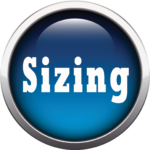You want to host Epicor Kinetic on premises, not Epicor’s cloud; yet selecting the right mix of hardware and server (or servers) can be a daunting task. That’s where Tomerlin-ERP comes in. We help clients and prospects determine the appropriate server sizing for their Kinetic implementation, ensuring that systems operate as expected; improving productivity, and increasing efficiency.
At Tomerlin-ERP, we understand that selecting the right server hardware for Kinetic is critical to the success of the organization. A server that is too small or underpowered can result in slow response times, system crashes, and data loss, while a server that is too powerful can be an unnecessary expense. That’s why we take a holistic approach to determining server sizing for our clients and prospects, taking into account four core factors; number of users, transaction volume, database size, and concurrent usage. Depending upon your specific needs we consider an additional four vital factors; customization and complexity, system integrations, disaster recovery and business continuity, locations and organizational complexity, and future growth and scalability.
Sizing Solutions with Tomerlin-ERP
Selecting the appropriate server hardware and sizing for an on-premises Epicor Kinetic implementation is a crucial decision that can have a significant impact on an organization’s productivity and efficiency. At Tomerlin-ERP, we understand the complexities involved in determining the appropriate server size for a Kinetic implementation and take a holistic approach that considers numerous factors and subtle nuances unique to your situation. By working with clients and prospects to determine the most suitable server hardware for their specific needs, we help ensure that their ERP systems operate as expected and contribute to the overall success of their organization.

Click here to share your situation and sizing requirements with Tomerlin-ERP. Our experts will reach out with sizing advice and help your Kinetic ERP deployment meet or exceed expectations.

Four Core Factors in Determining Hardware/
Number of Users
A server that is too small or underpowered will result in slow response times, while a server that is overkill will be an unnecessary expense.
Transaction Volume
The higher the transaction volume, the more powerful the server will need to be to handle the additional workload.
Database Size
A larger database will require a more powerful server with more storage capacity, maybe even a separate, dedicated database server.
Concurrent Usage
The number of users who will be using the system simultaneously is another critical factor to consider when determining server sizing. If multiple users will be accessing the system at the same time, a more powerful server will be required to handle the additional workload.
At Tomerlin-ERP, we work with clients and prospects to determine the appropriate server size based on the expected number of users, transaction volume, database size, and concurrent usage of their ERP system. Depending upon other potential requirements we also consider four additional factors.
Four Additional Factors of Hardware/
Customization and Complexity
If your Kinetic implementation is highly customized or has complex functionality, it may require a more powerful server to handle the additional workload. At Tomerlin-ERP, we work with clients and prospects to determine the appropriate server size based on the level of customization and complexity of their ERP system.
Disaster Recovery and Business Continuity
If your Kinetic system is critical to the organization’s operations, hardware requirements may need to include redundancy and failover mechanisms to ensure disaster recovery and business continuity. At Tomerlin-ERP, we work with clients and prospects to determine the appropriate server needs based on their disaster recovery and business continuity needs.
Locations and Organizational Complexity
If your enterprise is multi-site, multi-company, or has other organizational complexities, Tomerlin-ERP can collaborate with your leaders and experts to develop the smoothest, most reliable, dynamic Kinetic ERP solution.
Future Growth and Scalability
It is important to consider the organization’s future growth plans and scalability needs when determining server sizing for Kinetic. This can help avoid the need for significant hardware upgrades in the near future. At Tomerlin-ERP, we work with clients and prospects to determine the appropriate server size based on their future growth and scalability needs.
The Art of Sizing
Other subtle factors come into play when determining server needs including Server Virtualization, Network Storage, Cloud/On-premises hybrids, and Hardware Types. Server Virtualization allows multiple virtual machines to run on a single physical server. Virtualization can help organizations maximize their hardware resources and reduce costs. Network storage options greatly affect Kinetic performance. Cloud/on-premises hybrids are becoming increasingly popular, and organizations need to consider how their server hardware will integrate with both on-premises and cloud-based systems. Finally, hardware types are an important consideration for server sizing, as different hardware types have varying capabilities, risks, and costs. By considering these factors and working with Tomerlin-ERP, organizations can ensure that they select the right server hardware for their specific needs, improve their system’s performance, and optimize their IT infrastructure.
